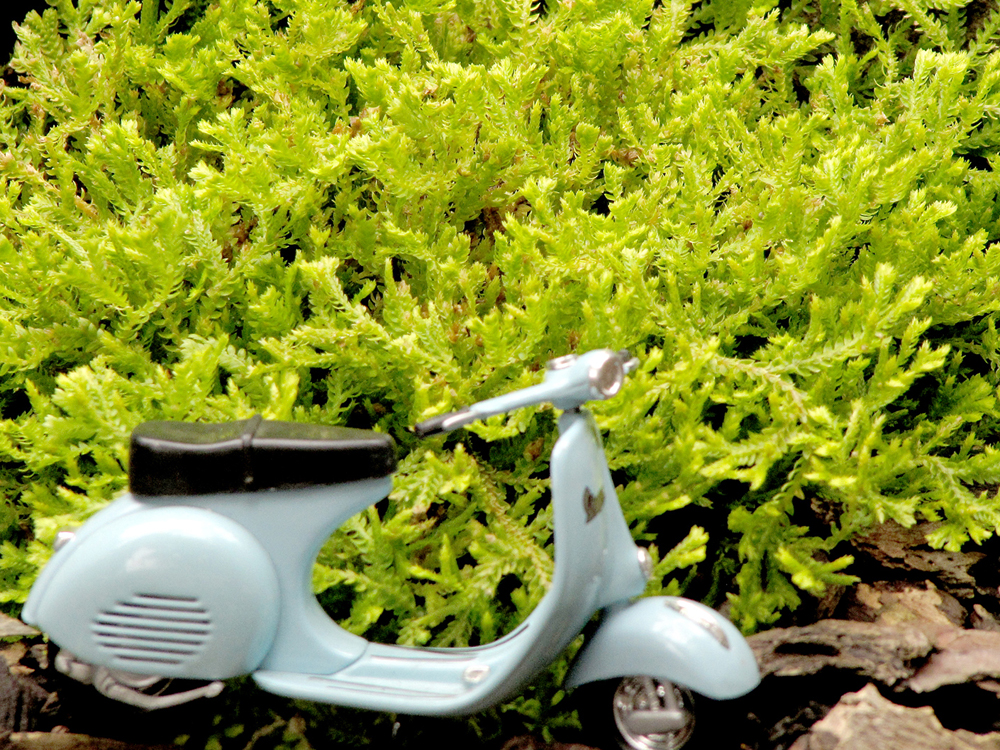
Common name: Trailing spikemoss, golden clubmoss
Latin name: Selaginella kraussiana ‘Aurea’
Plant type: Groundcover
Plant size: Moist, acidic soil; part or full shade
USDA Hardiness Zones: 6-9
Cultural needs: Mounding as high as 6″, spreading to 24″
Spikemoss, with its seaweed-like jointed stems, has an other-world appearance, as do the liverworts, when you get down close to have a look. Not a flowering plant, the clubmosses are known as fern allies and reproduce by spores, which need complete darkness to germinate.
The chartreuse-colored golden clubmoss is similar in most ways to S.k. ‘Gold Tips’. Given good, moist conditions, clubmosses will spread quickly, setting down roots from their little branches. In Zone 6, it will die back but, in Zones 7 and higher, it will remain evergreen. S. helvetica, Swiss spikemoss, spreads in a more open, spikier habit but is hardy to Zone 5. For the northerners, a similar moss ally, which looks like a 2″-high tree with 3″ yellow fingers (digits), is Lycopodium digitatum, which will grow in Zones 4-7. Trailing spikemoss enjoys growing under trees and shrubs.













